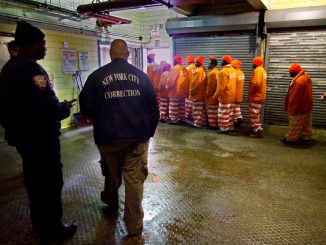In 2013, for two months, over 30,000 prisoners throughout 67 percent of the California state prison system went on a hunger strike to protest their treatment. This was the third hunger strike by prisoners since 2011, and it was by far the biggest fight in the history of the prison system in this country. Against all odds, amidst segregation, gang conflicts, and horrific conditions, these prisoners were able to organize and use their refusal to eat to pressure prison authorities and politicians to address their demands.
The hunger strike began on July 5th, 2013 with 30,000 prisoners in 22 California prisons refusing to eat. Finally after two months of the strike, prison officials agreed to hold public hearings on the conditions in the prisons and the isolation units, and to meet with the leaders of the strike in order to discuss their demands. On September 5th, prisoners and prisoner rights activists announced the end of the strike.
The strike was organized by the major prison gangs, usually organized around different ethnic groups – white, black, Latino. These organizations, typically tools to divide and conquer, were transformed by the prisoners into a means to work together. Behind locked doors and under the most intense surveillance, these prisoners were able to organize, plan a strategy, and make their demands with the help of prisoner rights activists and organizations on the outside.
The prisoners’ demands included better, more nutritional food, access to medical care, and an end to ongoing violence and abuse by the guards. But above all, the prisoners demanded an end to the tortuous system of isolation in solitary confinement units known as the Secure Housing Units – the “SHU.” It was from these inmates in the SHU that the organization of the hunger strike began.
In the SHU, prisoners are confined for years in windowless cement cells. Without any sunlight or fresh air, these prisoners spend 22 hours per day alone and confined, under constant surveillance by guards, who regularly beat them, search their cells, and subject them to humiliation. There are 80,000 people in solitary confinement in U.S. prisons, and California prisons are among the most brutal. There are 750 prisoners in solitary confinement who have been there for over ten years. There are dozens among them who have been in solitary confinement for more than 20 years.
The fact that these prisoners have not only survived such horrific conditions but were able to organize a mass movement of this scale is an impressive example of the resilience of people to fight despite their difficult situations. For the most part, the conditions of the prisoners have not improved from this strike. But the scale of the prisoners’ hunger strike proved to the inmates that despite the overwhelming obstacles stacked against them, they were able to develop networks, organize, and unite to fight for their interests. At the end of the strike, an organizer of the strike made this point: “From our perspective, we’ve gained a lot of positive ground towards achieving our goals. However, there’s still much to be done. Our resistance will continue to build and grow until we have won our human rights.”




